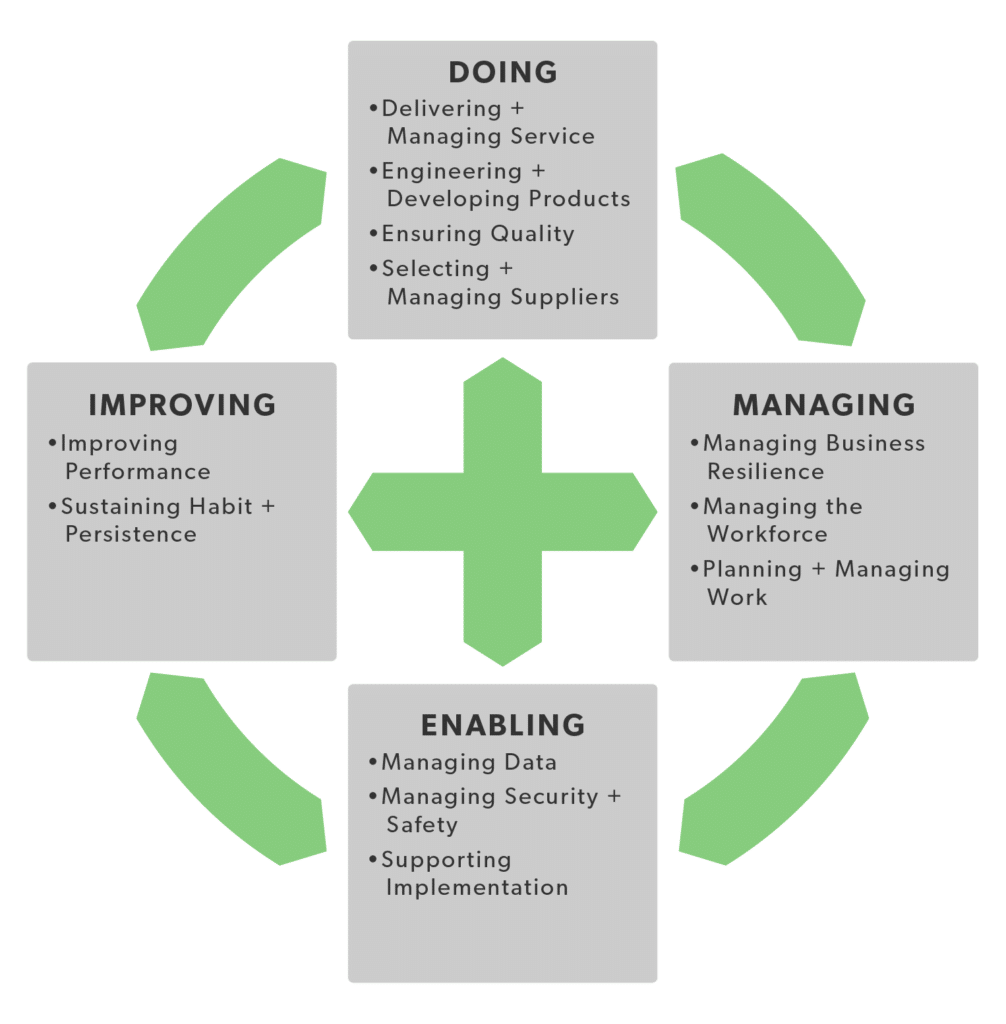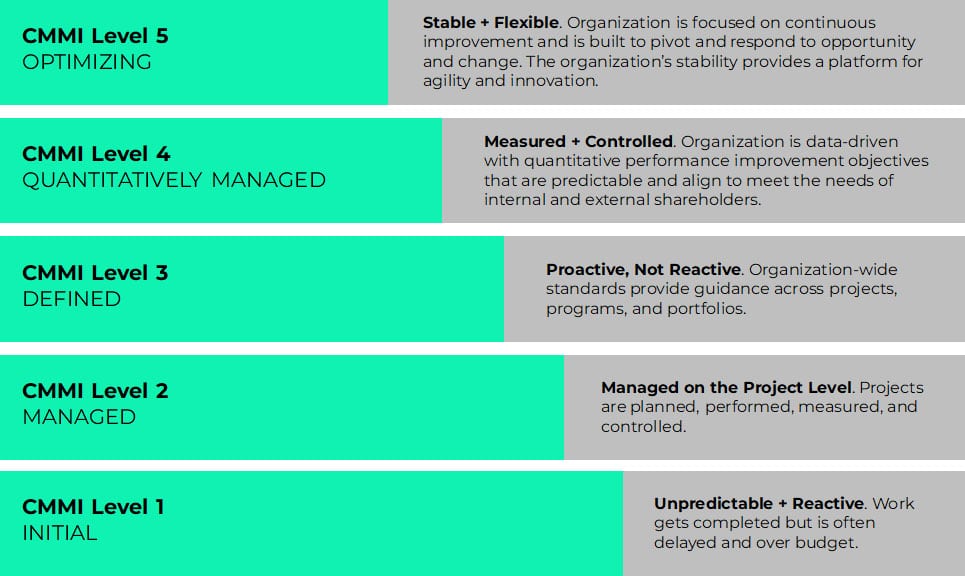What has Changed in CMMI v3.0?
CMMI v3.0 brings about strategic changes and improvements to both methodology and approach. These updates include new requirements, existing standards changes, and continuing common practices.
New Capability Area
CMMI v3.0 introduces the addition of a new Capability Area called Managing Data, recognizing the growing importance of data management. In addition, three new Practice Areas are included: Data Management (DM), Data Quality (DQ), and Workforce Empowerment (WE).
The former Practice Area, Enabling Virtual Solution Delivery (EVSD), has been renamed to Enabling Virtual Work (EVW) to better reflect its scope, which now encompasses virtual work and virtual delivery based on community feedback.
Alignment of View/Domain Information
This update also includes the alignment of view/domain information with the following domains: Data, Development, People, Safety, Security, Services, Suppliers, and Virtual. Notably, the Supplier Management view has been renamed to Suppliers for better clarity.
Addition of Context-Specific Information
CMMI v3.0 also adds Context-specific information in the areas of Data, DevSecOps, and People for both core and domain Practice Areas. The Agile with Scrum Guidance Context Specific information has been renamed to Agile Development, and all content has been updated accordingly. The Supplier Management Context Specific information is now called “Suppliers” to align with the Suppliers domain.

Maintains Consistent Terminology
Unlike the previous CMMI Version 2.0 Model, CMMI Version 3.0 maintains consistent terminology, allowing for a smoother transition and ensuring continuity for organizations familiar with previous versions.
CMMI v3.0 Model Overview
Category Areas
Four Category Areas define practices for improved performance within an organization or project. See Figure Below.
Capability Areas
Each Category Area contains specifically defined Capability Areas, which are logical groups of related and common practices encountered in developing and delivering a product or service. See Figure Below.

Maturity Levels
CMMI offers five Maturity Levels, with most organizations seeking ML 2 (Managed) or ML 3 (Defined), with ML 3 being the most popular. CMMI Maturity Level 3 is at the Defined level. Appraising at CMMI Level 3 means your organization is proactive, rather than reactive. The organization-wide standards guide projects, programs, and portfolios. Source ISACA CMMI Institute. See the Maturity Level graphic below.

Practice Areas
In CMMI ML3 there is use of organizational standard practices, assets, and tailoring that address issues, achieve organization objectives, and program objectives, and focus on overall quality. The following Practice Areas are rated at Maturity Level 3 (Configuration Management does not have any additional practices at Maturity Level 3)
CMMI Core Practice Areas (31):
• Managing Performance and Management
• Process Quality Assurance
• Configuration Management
• Monitor and Control
• Planning
• Estimating
• Requirements Development and Management
• Governance
• Implementation Infrastructure
• Causal Analysis and Resolution
• Decision Analysis and Resolution
• Organizational Training
• Risk and Opportunity Management
• Process Asset Development
• Peer Reviews
• Process Management
• Verification and Validation


Domains Specific:
Development:
• Technical Solution
• Product Integration
Data:
• Data Management
• Data Quality
People:
• Workforce Empowerment
Safety:
• Enabling Safety
Security:
• Enabling Security
• Managing Security Threats & Vulnerabilities
Services:
• Continuity
• Incident Resolution & Prevention
• Service Delivery Management
• Strategic Service Management
Suppliers:
• Supplier Agreement Management
Virtual:
• Enabling Virtual Work
CMMI v3.0 Released in April 2023
The CMMI v3.0 Model was released in April 2023 by The CMMI Institute, and beginning January 1, 2024, only CMMI V3.0 appraisals will be accepted. CMMI V2.2 will be retired in June 2024. Source: ISACA CMMI Institute
Expert Consulting
Need help implementing CMMI v3.0 to your business? Our solutions include hands-on consulting support from industry experts. We don’t leave you to figure out compliance on your own. We walk you through every step of the process.



